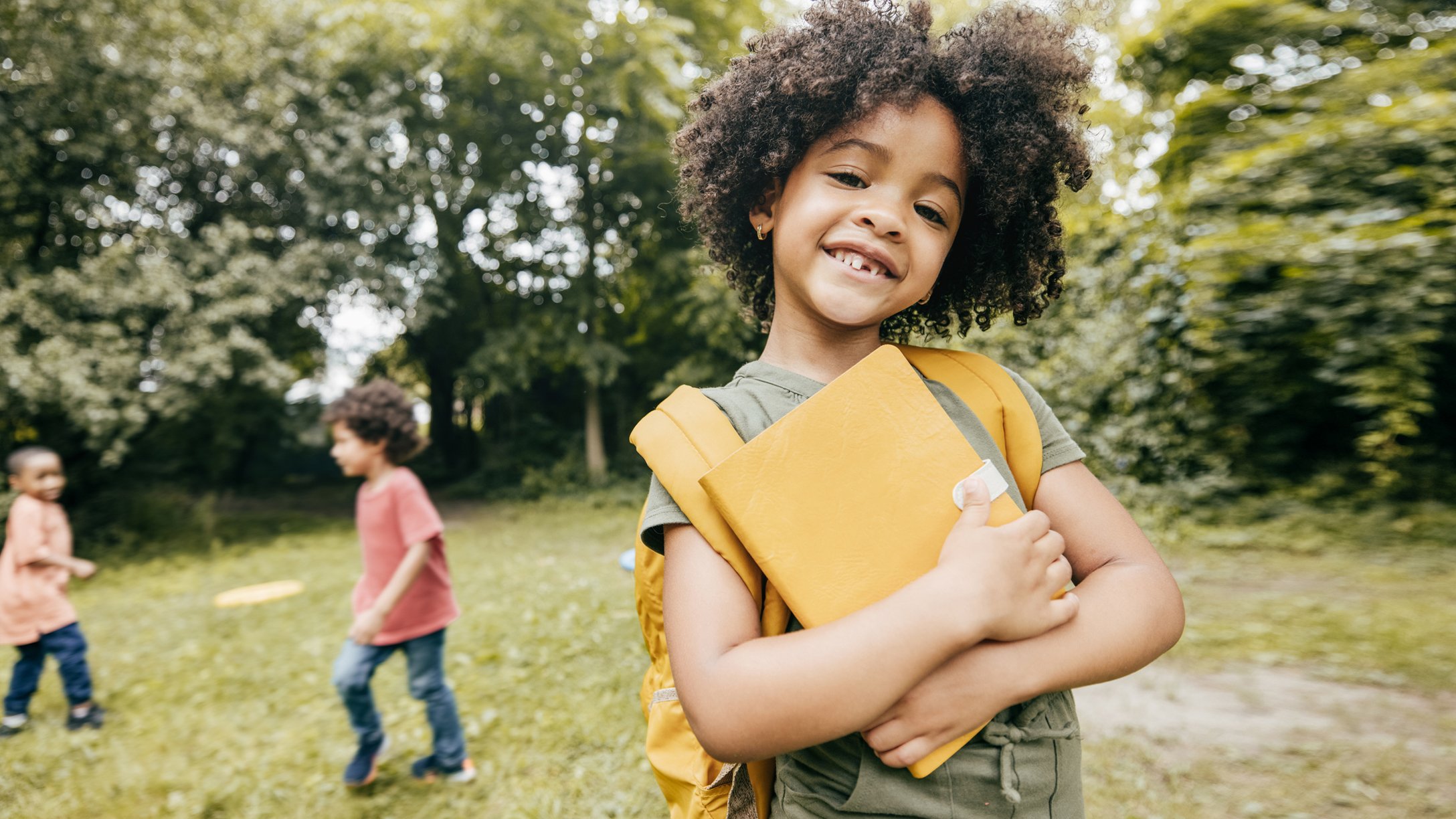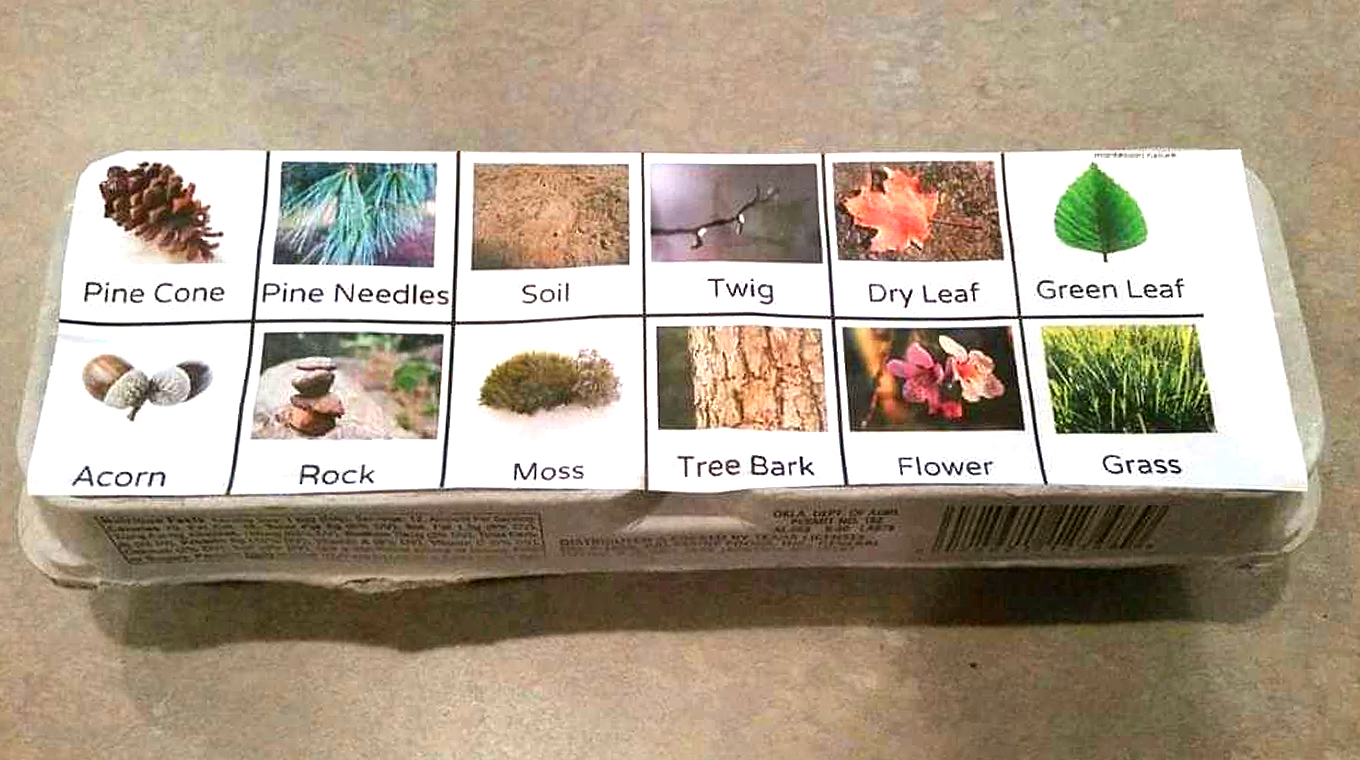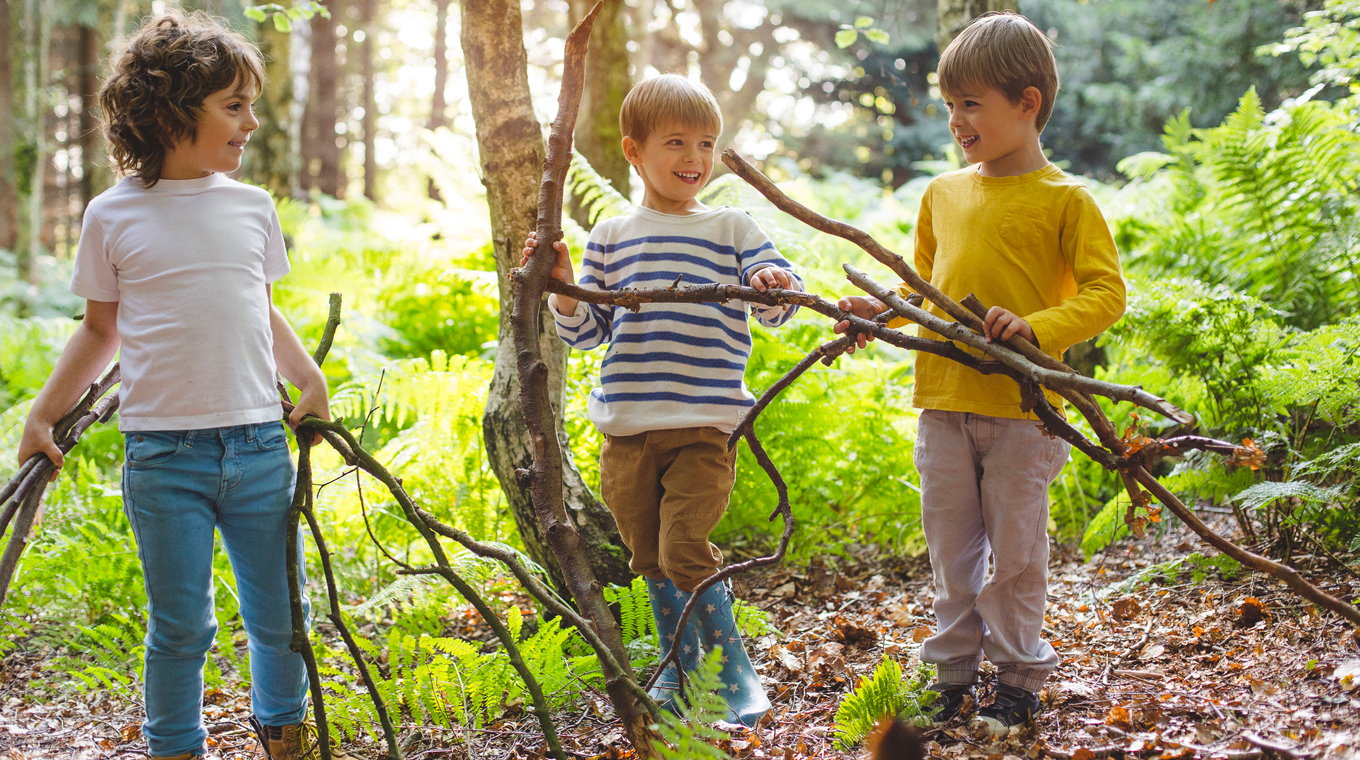
In this article
With so much vying for our attention indoors — like streaming services, social media, and video games — chances are we all could use a little bit more time outdoors. And how do we encourage our kids to go out and play when we’re guilty of being glued to our screens as well? Well, if you’re looking for ways to get your family outside and in nature, here are some activities and kids’ outdoor games that are both fun and educational for the whole family.
It doesn’t matter how your child spends their time outside, the important thing is that we as caregivers make outdoor play a priority. Richard Louv, journalist and author of Last Child in the Woods: Saving Our Children from Nature-Deficit Disorder, coined a term, “nature-deficit disorder,” that can be described as a non-medical condition that suggests lack of time outdoors contributes to negative behavioral changes in children.
“Ironically, the 2020 coronavirus pandemic, as tragic as it is, has dramatically increased public awareness of the deep human need for nature connection, and is adding a greater sense of urgency to the movement to connect children, families, and communities to nature,” Louv told The New York Times.
Kids' outdoor games and activities for the whole family

Invest in yard dice — or make your own — for loads of family fun
Large wooden yard dice are great for a good game of backyard Yahtzee, but you can also play a number of other games with them, like Beat That! You could even make up your own games using these larger-than-life dice.
Start a nature journal
John Muir Laws is a California-based naturalist, artist, educator, and author who brings nature to life on the pages of his journals. He has been sharing his love of nature journaling across social media for years, most recently with The Nature Journal Connection, a series of 40 nature journaling videos geared toward upper elementary and middle school students. Grab your journals, pencils, and watercolors and begin chronicling the beauty of nature.
Set up a scavenger hunt
The great thing about scavenger hunts is that they can be adapted to your child’s needs, age, and interests. A simple nature scavenger hunt for preschoolers can simply be an egg carton, as pictured above, with images of items to find on the top. They can search for items and safely secure their treasures in the compartments of the carton. Older kids may enjoy a selfie scavenger hunt; rather than collecting items, they need to find landmarks and take a selfie next to the site.
Educational kids' games using items from nature

Rocks make excellent math manipulatives
Use rocks to teach multiplication using arrays to demonstrate how to determine multiples of groups of numbers. You can also use rocks to help your child identify prime numbers; create arrays with groups and indicate which numbers can only be multiplied by themselves and the number one.
Rocks are great for introducing skip-counting as well. Younger children can simply count rocks, and sort them by color and size. Pair the rocks with other items from nature and let your kids practice early math skills by creating their own patterns.
Sticks can be used in a variety of ways
A common activity in the early grades is counting or collecting data using tally marks. Small twigs make excellent, tangible tally marks for a hands-on representation of what you’d typically have a child do with pencil and paper.
This is another fun way to teach skip-counting for the number 5 as well. Sticks and twigs can be broken to help your child visualize and understand fractions as parts of a whole.
Create an outdoor learning space
It can be a hassle packing up all of the supplies and heading outside when outdoor learning inspiration strikes. Creating a dedicated space for your kids’ outdoor games and activities can encourage learning when you least expect it.
“Create an outdoor classroom at home to make getting outside easier. A picnic table in the backyard is a great outdoor classroom, but you can also assemble a circle of cut logs or hay bales,” homeschooling mom of three Ashley Mullen wrote on her blog, Forgetful Mama. “A shed that you can use to keep learning outside, even in the rain,” would keep supplies safe from the elements, Mullen added.
What if you don't have a backyard?

Even if you have a tiny, postage-stamp backyard, or live in an apartment with minimal access to green space, there are still a number of ways to incorporate kids’ outdoor games into your child’s playtime.
“If you explore a woody area in the park, there is something for every age there,” Louise Chawla, Ph.D., told The New York Times.
“There are rocks of different weights, stumps of different sizes, lighter and heavier sticks. Whatever a child’s current skill level is, they can work toward their next level of challenge. They are learning about their own capabilities,” the University of Colorado Boulder, professor emerita, explained.
Parks and nature trails are always an option, but there are probably resources you hadn’t even considered, right around the corner. For toddlers and preschoolers, a simple walk around the neighborhood will suffice. Let them walk the length of a wall to practice balance or jump between sidewalk squares to burn off energy. Make a game of it by timing your child to see how long they can stay on the wall without losing their balance.
Cities are great places to introduce architectural design concepts like columns and arches. See who can point out the various building materials like iron and steel, and design elements, first. And of course, get younger kids to recognize familiar shapes. Make it into a game by having your child recognize as many elements of architecture as possible. City life also presents an opportunity to visit natural history museums, planetariums, aquariums, and botanical gardens.




